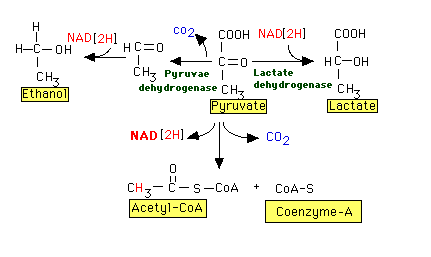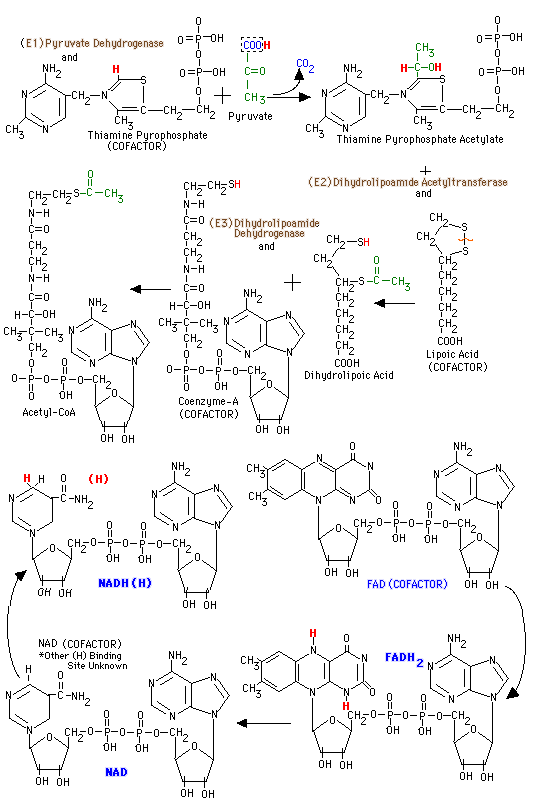The pyruvic molecules formed in glycolosis enter the mitochondria, where they are converted to acetyl Coenzyme-A (acetyl-CoA). In this complex series of reactions, pyruvate undergoes oxidative decarboxylation. First, a carboxyl group is removed as carbon dioxide, which diffuses out of the cell. Then the two-carbon fragment remaining is oxidized, and the hydrogens that were removed during the oxidation are accepted by NAD+. Finally, the oxidized two-carbon fragment, an acetyl group, is attached to Coenzyme-A, which is manufactured in the cell from one of the B vitamins, pantothenic acid. The reaction is catalyzed by a multienzyme complex that contains several copies of each of three different enzymes. The overall reaction for the formation of acetyl Coenzyme-A can be stated as follows:
2 pyruvate + 2 NAD+ + 2 CoA  2 acetyl-CoA + 2 NADH + 2 carbon dioxide
2 acetyl-CoA + 2 NADH + 2 carbon dioxide
Note that the original glucose molecule has now been oxidized to two acetyl groups and two carbon dioxide molecules. The hydrogens removed have reduced NAD+ to NADH. At this point in aerobic respiration, four NADH molecules have been formed from a single starting glucose molecule, two during glycolosis and two during the formation of acetyl-CoA from pyruvate.
url=https://biology-forums.com/index.php?action=gallery;sa=view&id=23574]

[/url]